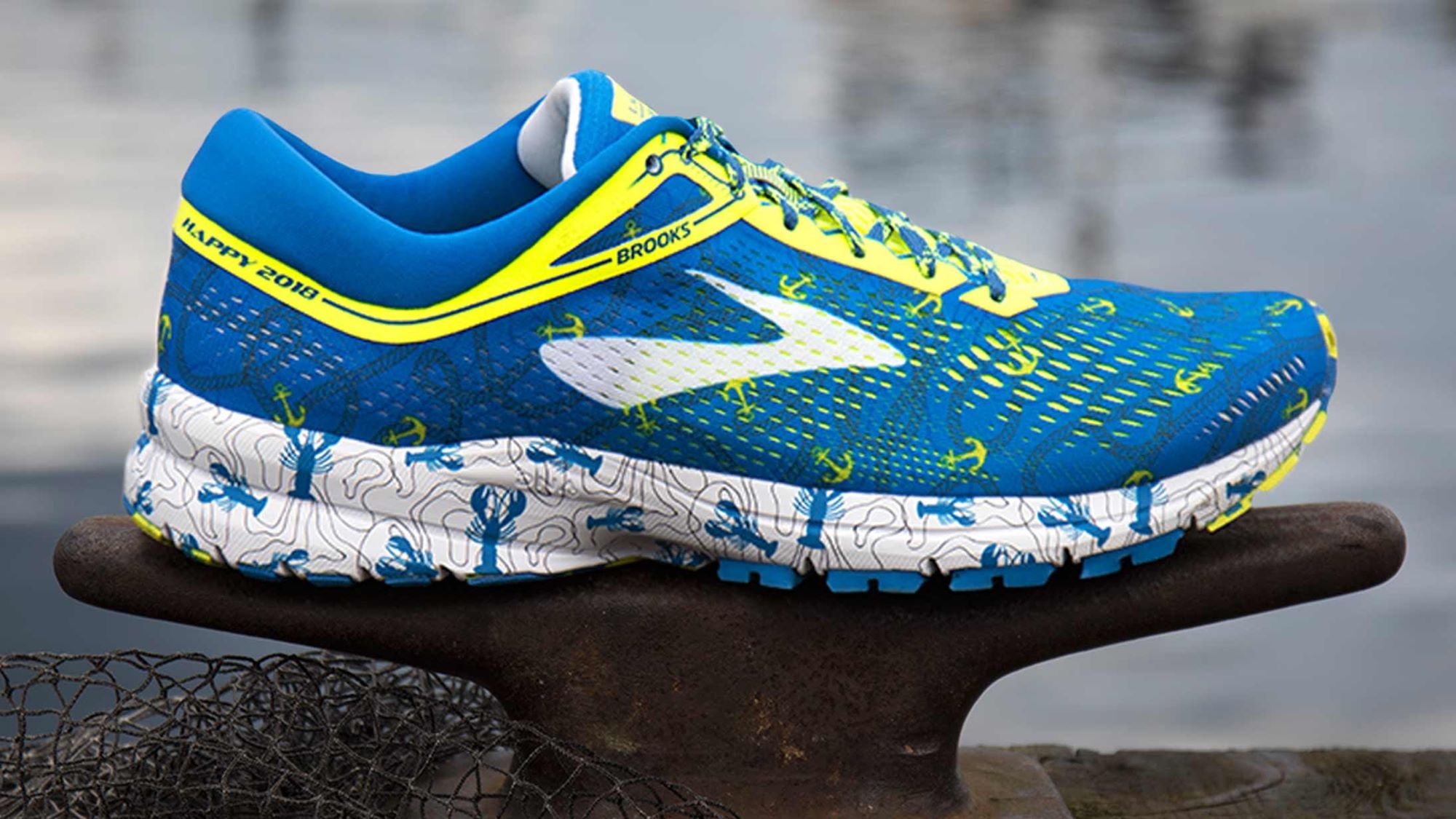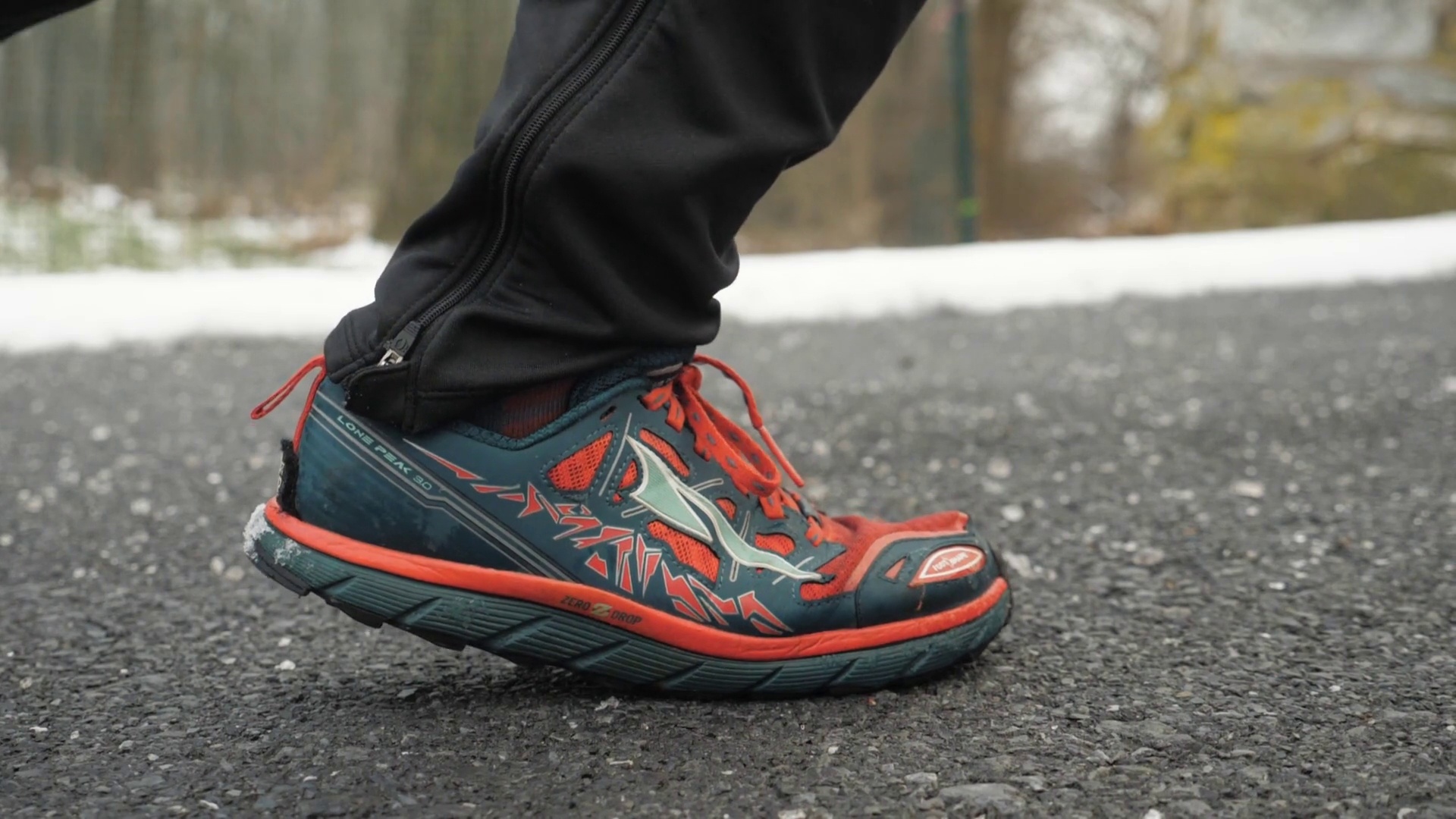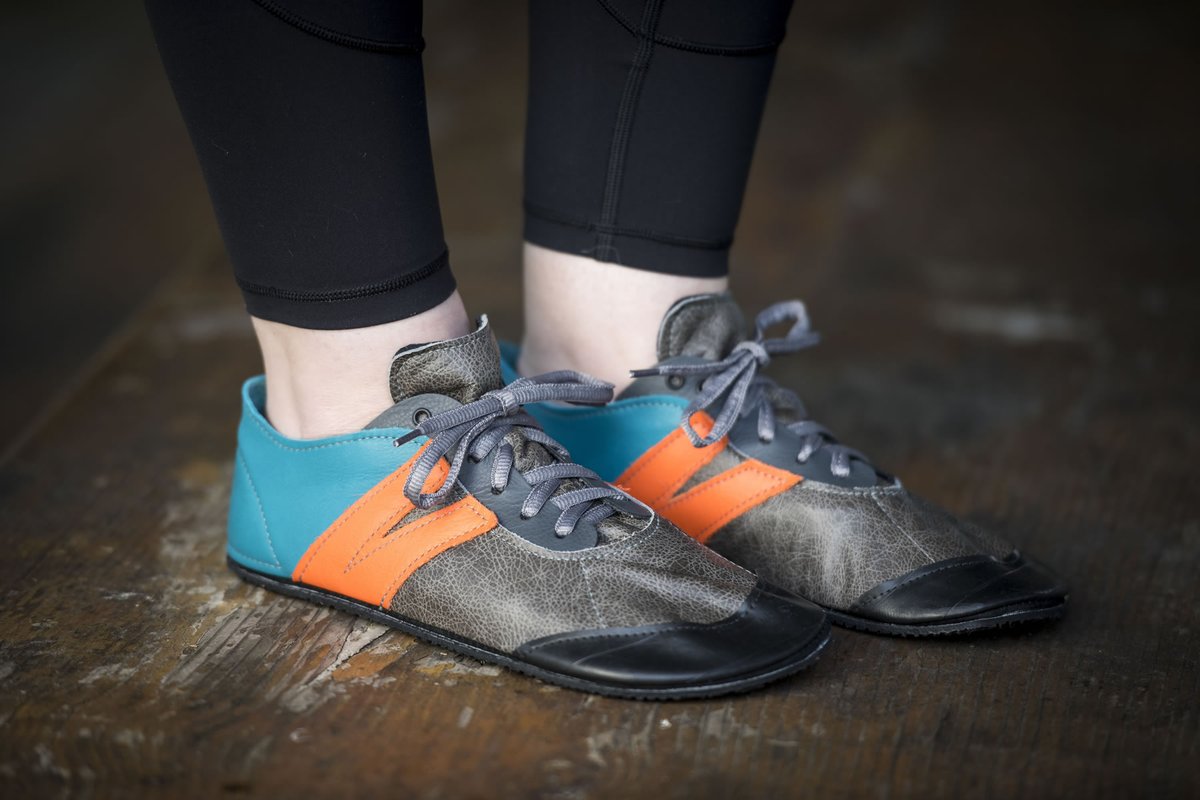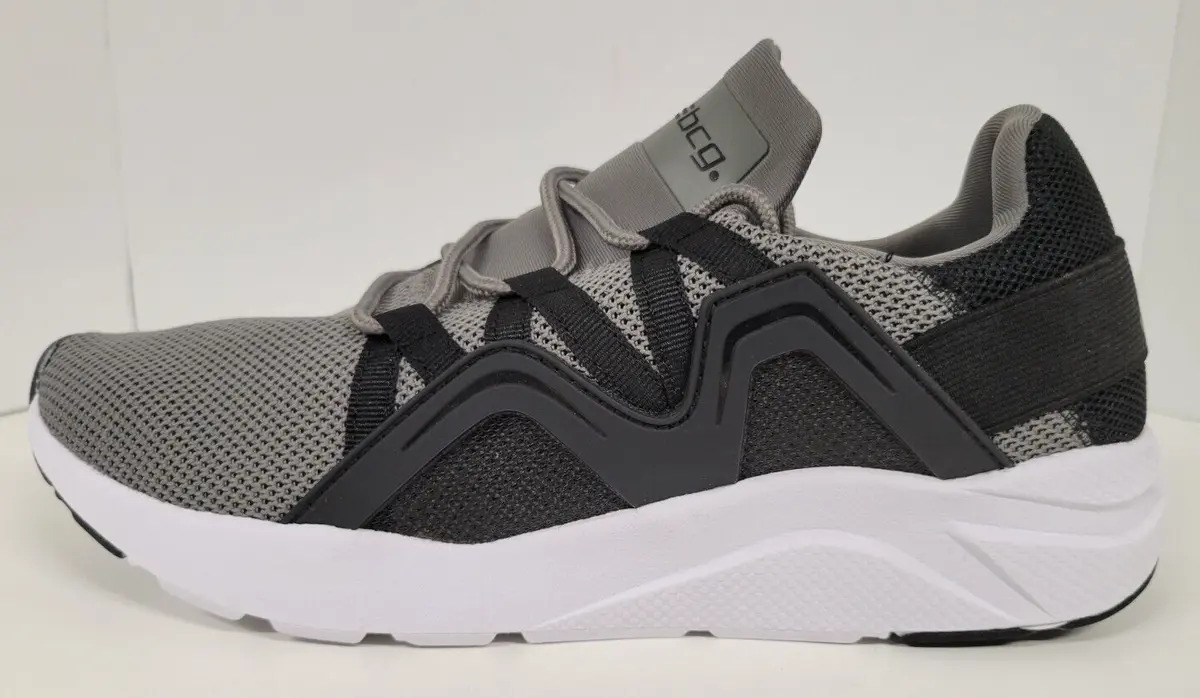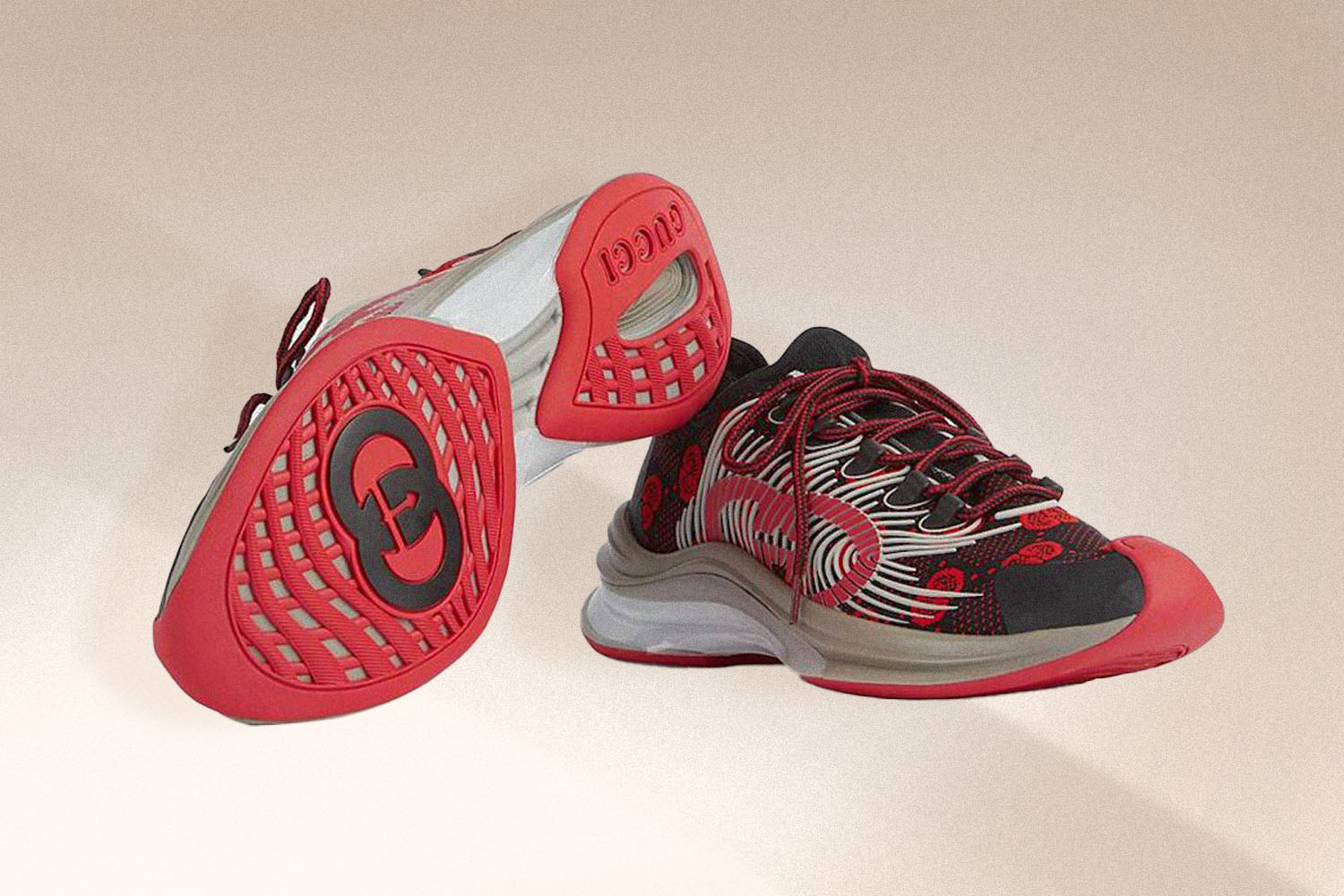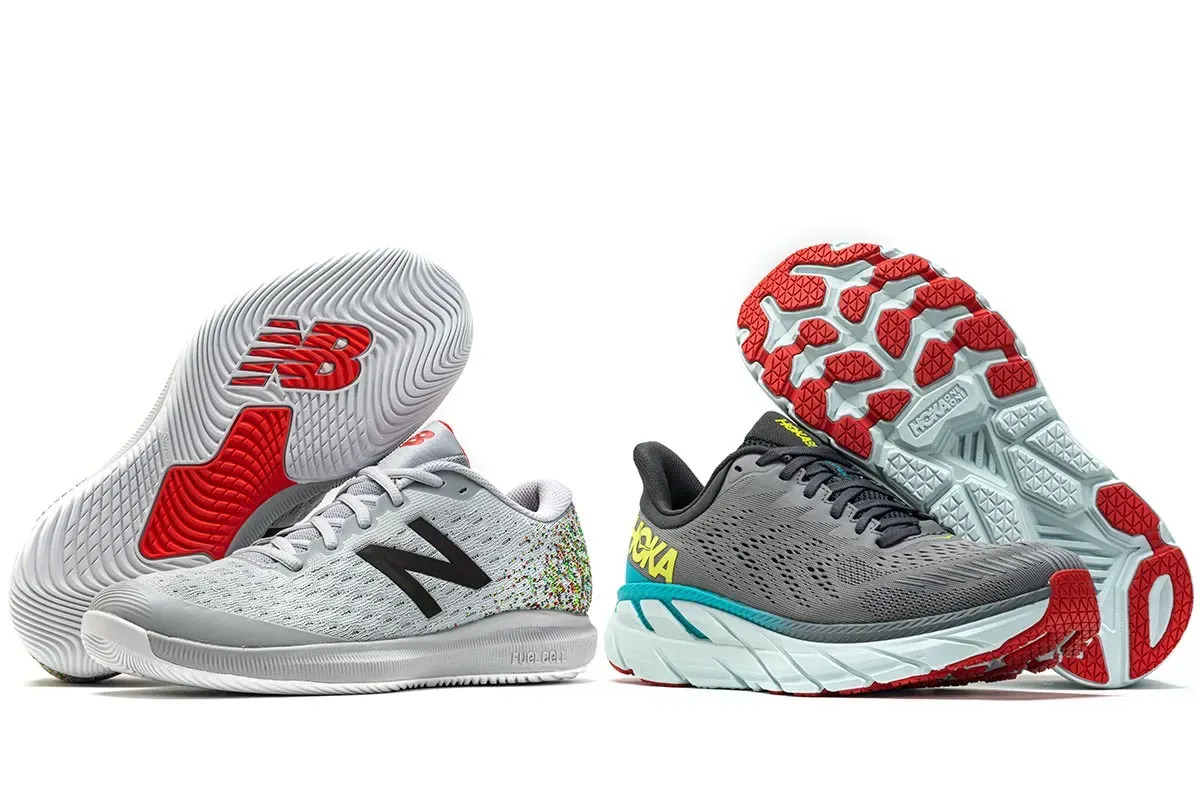

Featured
What Is Stability Running Shoes
Modified: January 22, 2024
Looking for stability running shoes? Check out our featured selection of shoes designed to provide support and balance for a smoother and more comfortable running experience.
Introduction
Welcome to the fascinating world of running shoes! Whether you are a seasoned runner or just starting out, you may have come across the term “stability running shoes.” But what exactly are stability running shoes and why are they important?
Running, a highly popular form of exercise, requires the right equipment to maximize performance and prevent injuries. One crucial piece of equipment for runners is a good pair of shoes. And within the realm of running shoes, stability shoes play a significant role.
Stability running shoes are specifically designed to provide additional support and control to runners who may overpronate, a common running movement where the foot excessively rolls inward. This inward rolling can lead to imbalanced foot mechanics, affecting the overall efficiency and comfort of your run.
But why is stability so crucial in running shoes? Well, running is a high-impact activity that places stress on the body, especially the feet and ankles. The feet act as the foundation, absorbing the impact of each stride, and maintaining stability in order to propel the body forward efficiently.
Without proper stability, runners may experience a variety of issues, including excessive stress on the feet, ankles, and knees, which can lead to discomfort, pain, and even injuries such as shin splints or plantar fasciitis.
So, how do stability running shoes work their magic? These shoes are designed with features that provide support and stability, helping to correct overpronation and improve overall running mechanics. They typically feature a combination of cushioning and firmness in the midsole and heel, as well as a supportive upper and a specially designed outsole.
Furthermore, stability running shoes often have a medial post, which is a denser section of foam or other material on the inside of the shoe. This feature helps to control the inward rolling motion of the foot, promoting a more neutral alignment.
Now that you have a basic understanding of what stability running shoes are and why they are important, let’s delve into the key features that make them stand out among other types of running shoes. Whether you are an experienced runner or just getting started, understanding the benefits and considerations of stability running shoes can help you make an informed decision when choosing the right pair for your needs.
Definition of Stability Running Shoes
Stability running shoes are a specific type of running shoe that is designed to provide support and control to runners who experience overpronation. Overpronation is a natural movement of the foot that occurs when the foot rolls inward excessively during each step of the running or walking gait. This can put strain on the foot, ankle, and lower leg, leading to discomfort and potential injuries.
Stability running shoes are constructed with features that aim to correct and control the excessive inward rolling motion. One of the key components of stability shoes is the medial post. This is a firmer section of the midsole, usually made of denser foam or a supportive material, located on the inner edge of the shoe. The medial post provides support and stability by limiting the amount of pronation and promoting a more neutral alignment of the foot.
In addition to the medial post, stability running shoes often have other features that contribute to their supportive nature. The midsole of the shoe is typically designed to provide a combination of cushioning and firmness. This helps to absorb shock and provide a stable base for the foot during the running stride. The upper of the shoe is also constructed with supportive materials, such as overlays or straps, to secure the foot and prevent excessive movement.
It’s important to note that stability running shoes are not to be confused with motion control shoes. While both types of shoes offer support and control for overpronation, motion control shoes are typically more rigid and have a stronger medial post, making them suitable for severe overpronation or heavier runners who require extra stability.
Stability running shoes are a popular choice among runners who experience mild to moderate overpronation or those who are looking for additional support and stability. However, it’s crucial to remember that every individual is unique, and what works for one person may not work for another. It’s always recommended to consult with a professional fitting expert or podiatrist who can assess your specific gait and provide recommendations on the most suitable running shoe for your needs.
Now that we’ve defined stability running shoes, let’s explore why stability is so important in running footwear and how these shoes can benefit your running performance and overall comfort.
The Importance of Stability in Running Shoes
If you’re a runner, you understand the importance of having stable and supportive running shoes. Stability in running shoes plays a crucial role in ensuring a comfortable and injury-free running experience. Here are some reasons why stability is so important in running shoes:
1. Corrects Overpronation: One of the main reasons why stability is important in running shoes is that it helps correct overpronation. Overpronation occurs when the foot rolls excessively inward during the running stride. This can put strain on the arch, ankles, and other joints in the lower body. Stability running shoes are designed to provide support and control to limit the inward rolling motion, promoting a more neutral alignment and reducing the risk of overuse injuries.
2. Enhances Stability and Balance: Stability running shoes are specifically engineered to provide a stable platform for the feet. The combination of features such as the medial post, cushioning, and supportive upper help to enhance stability and balance while running. This is especially important when navigating uneven terrain or during quick direction changes, as it minimizes the risk of ankle sprains or other stability-related injuries.
3. Reduces Risk of Injuries: Wearing stability running shoes can significantly reduce the risk of common running injuries. When the foot rolls inward excessively, it can cause imbalances in the lower body mechanics, leading to issues such as shin splints, plantar fasciitis, or knee pain. Stability shoes help to align the foot properly and distribute the impact forces more evenly, thereby reducing the stress on the muscles, tendons, and joints.
4. Provides Cushioning and Support: Along with stability features, these shoes also offer ample cushioning and support. The midsole of stability running shoes is designed to provide a comfortable and responsive ride by absorbing shock and providing a cushioned landing. This cushioning helps to protect the feet from the repetitive impact of running, enhancing overall comfort and reducing fatigue.
5. Improves Running Efficiency: Stability in running shoes can also improve running efficiency. When the foot is properly supported and aligned, the body can move in a more natural and efficient manner. This allows runners to conserve energy and maintain a more efficient stride, resulting in improved performance and endurance.
6. Customizable Fit: Stability running shoes come in different styles and models to accommodate various foot shapes and sizes. Many brands offer different widths and features that allow for a more customizable fit, ensuring that runners can find the perfect shoe that suits their individual needs and preferences.
By prioritizing stability in your running shoes, you significantly reduce the risk of injuries, enhance comfort, and improve overall running performance. Now that we understand the importance of stability, let’s take a closer look at how stability running shoes work to provide the necessary support and control for runners.
How Stability Running Shoes Work
Stability running shoes are specifically designed to provide support and control to runners who experience overpronation. But how exactly do these shoes work to correct and manage the inward rolling motion? Let’s explore the key mechanisms behind the functionality of stability running shoes:
1. Medial Post: The medial post is a fundamental feature in stability running shoes. It is a firmer section of the midsole, typically made of denser foam or a supportive material, located on the inner edge of the shoe. The medial post helps to limit the amount of pronation by controlling and guiding the foot towards a more neutral alignment. It provides stability, prevents excessive inward rolling, and promotes a more efficient gait cycle.
2. Cushioning and Firmness: Stability running shoes strike a balance between cushioning and firmness in the midsole. The cushioning provides a comfortable and shock-absorbing layer, while the firmness provides support and stability. The combination of these two elements helps to reduce impact forces and evenly distribute pressure throughout the foot. It also assists in maintaining a stable platform, preventing excessive foot movement and reducing the risk of injury.
3. Supportive Upper: The upper of stability running shoes plays a vital role in providing support and lockdown for the foot. It is typically constructed with supportive materials such as overlays or straps that help secure the foot in place during the running motion. This prevents excessive movement and ensures a more stable and controlled ride. The supportive upper also helps to enhance the overall fit and comfort of the shoe.
4. Heel Counter: Stability running shoes often feature a sturdy heel counter at the back of the shoe. The heel counter provides additional stability and support to the rearfoot, preventing excessive inward or outward movement of the foot. It helps to keep the foot in a neutral position, reducing the risk of overpronation and maintaining proper alignment throughout the running stride.
5. Outsole Design: The outsole of stability running shoes is engineered to provide traction and stability on various surfaces. It is designed with patterns or grooves that enhance grip and promote a secure footing. The strategic placement of these patterns also contributes to the overall stability of the shoe.
6. Customizable Features: Many stability running shoes come with customizable features that allow runners to personalize their fit. This includes options to adjust the lacing system, add or remove insoles or inserts for additional support, or choose from different widths to accommodate individual foot shapes.
By combining these elements, stability running shoes effectively control overpronation, provide support, and enhance stability. They promote a more neutral alignment, distribute impact forces evenly, and reduce the risk of injuries associated with improper foot mechanics. However, it’s important to note that while stability running shoes are beneficial for runners with overpronation, they may not be suitable for everyone. It’s recommended to consult with a fitting expert or podiatrist to determine if stability shoes are the right choice for your specific gait and foot type.
Now that we understand how stability running shoes work, let’s explore the key features that make these shoes stand out among other types of running footwear.
Key Features of Stability Running Shoes
Stability running shoes are designed with specific features that set them apart from other types of running shoes. These features are aimed at providing support, control, and stability to runners who experience overpronation or require additional stability. Here are some key features you can expect to find in stability running shoes:
1. Medial Post: The medial post is a crucial feature in stability running shoes. It is a firmer section of the midsole, located on the inner edge of the shoe. The medial post helps to control overpronation by limiting excessive inward rolling of the foot. It provides support and stability to promote a more neutral alignment, reducing the risk of injuries and enhancing overall comfort.
2. Arch Support: Stability running shoes often feature enhanced arch support. The arch support helps to maintain the natural arch of the foot, preventing it from collapsing excessively during the running stride. This contributes to better foot alignment and improved stability.
3. Cushioning: Stability running shoes offer adequate cushioning to absorb shock and provide a comfortable running experience. The cushioning is typically found in the midsole and helps to evenly distribute the impact forces, reducing stress on the feet and lower body. This cushioning also helps to improve shock absorption and alleviate discomfort during long runs or high-impact activities.
4. Supportive Upper: The upper of stability running shoes is designed to provide support and a secure fit. It is often constructed with supportive materials, such as overlays or straps, that help to lock the foot in place. This prevents unnecessary movement of the foot within the shoe and enhances stability.
5. Heel Counter: Stability running shoes feature a reinforced heel counter at the back of the shoe. The heel counter provides stability and support to the rearfoot, minimizing excessive inward or outward movement of the foot. This helps to maintain proper alignment and control overpronation, reducing the risk of injuries.
6. Outsole Design: The outsole of stability running shoes is designed to provide traction and durability. It is often made of a durable rubber material with patterns or grooves that enhance grip on various surfaces. The strategic placement of these patterns also contributes to the overall stability of the shoe, allowing for a secure and stable footing.
7. Customizable Fit: Many stability running shoes offer customizable fit options. This includes features such as adjustable lacing systems, removable insoles, or different width options. These customizable features ensure that runners can find the perfect fit that accommodates their individual foot shape and preferences.
By encompassing these key features, stability running shoes provide the necessary support, control, and stability for runners with overpronation or those seeking additional stability. However, it’s important to remember that each individual’s foot mechanics and needs may vary. It’s always recommended to consult with a professional fitting expert or podiatrist to determine the right stability running shoe for your specific requirements.
Now that we’ve explored the key features of stability running shoes, let’s uncover the benefits that come with wearing these specialized footwear options.
Benefits of Wearing Stability Running Shoes
Wearing stability running shoes offers a range of benefits that can enhance your running experience and overall foot health. Whether you’re an experienced runner or just starting out, here are some key benefits you can expect from wearing stability running shoes:
1. Corrects Overpronation: One of the primary benefits of stability running shoes is their ability to correct overpronation. The medial post and other stability features work together to control the inward rolling motion of the foot, promoting a more neutral alignment. This helps to reduce the risk of injuries caused by improper foot mechanics and prevents excessive stress on the feet, ankles, and knees.
2. Enhances Stability and Balance: Stability running shoes are designed to provide a stable and supportive platform for the feet. The combination of the medial post, supportive upper, and cushioning helps to improve stability and balance while running. This is particularly beneficial when navigating uneven surfaces or tackling quick direction changes, as it minimizes the risk of ankle sprains or loss of footing.
3. Reduces the Risk of Injuries: Wearing stability running shoes can significantly reduce the risk of common running injuries. By correcting overpronation and providing adequate support, these shoes help to align the feet properly and distribute impact forces more evenly. This reduces the strain on the muscles, tendons, and joints, lowering the risk of injuries such as shin splints, plantar fasciitis, and knee pain.
4. Alleviates Discomfort and Fatigue: Stability running shoes are designed with cushioning to provide a comfortable and responsive ride. The cushioning helps to absorb shock and reduce the impact on the feet, providing relief from discomfort and fatigue. This allows you to enjoy longer runs or engage in high-impact activities without experiencing excessive strain on your feet.
5. Improves Running Efficiency: Stability running shoes can improve running efficiency by promoting a more natural and efficient running stride. When the feet are properly supported and aligned, the body can move with greater efficiency, allowing you to conserve energy and maintain a more efficient running form. This can result in improved performance and endurance.
6. Customizable Fit: Many stability running shoes offer customizable fit options such as adjustable lacing systems or different width options. This ensures that you can find the perfect fit that accommodates your individual foot shape and preferences, enhancing overall comfort and reducing the risk of discomfort or blisters.
7. Versatility: Stability running shoes are not only suitable for running but can also be used for other athletic activities. Whether you’re participating in cross-training, gym workouts, or simply going for a walk, stability shoes provide the necessary support and stability to keep you comfortable and protected.
By wearing stability running shoes, you can experience the benefits of improved stability, reduced risk of injuries, enhanced comfort, and improved running performance. However, it’s important to remember that individual needs may vary, and it’s always advisable to seek professional advice to determine the most suitable shoe for your specific foot mechanics and running style.
Now that we’ve explored the benefits of wearing stability running shoes, let’s delve into who would benefit most from wearing these specialized shoes.
Who Should Wear Stability Running Shoes
Stability running shoes are specifically designed to cater to the needs of certain individuals who might benefit from the additional support, control, and stability they provide. While every runner is unique, here are some general guidelines on who would benefit most from wearing stability running shoes:
1. Overpronators: The primary target audience for stability running shoes are individuals who experience overpronation, which is the excessive inward rolling of the foot during the running stride. Overpronation can lead to imbalances in the foot mechanics and increase the risk of injuries. Stability running shoes with a medial post are designed to correct this motion and promote a more neutral alignment, making them ideal for overpronators.
2. Mild to Moderate Overpronation: Stability running shoes are particularly suitable for individuals with mild to moderate overpronation. These shoes provide the right amount of support and control to manage the inward rolling motion and maintain proper alignment. Those with severe overpronation may benefit from motion control shoes, which offer a higher level of stability and control.
3. Beginner Runners: Novice runners who are just starting their running journey may find stability running shoes beneficial. As beginners are still developing proper form and foot mechanics, stability shoes can help provide the necessary support and reduce the risk of injuries associated with improper foot alignment or mechanics.
4. Individuals in Physically Demanding Professions: People who have physically demanding professions that require prolonged standing or walking, such as nurses, teachers, or construction workers, may benefit from the stability and support of running shoes. These shoes can help alleviate the stress and fatigue on their feet, providing comfort and reducing the risk of foot-related issues caused by extended periods of standing or walking.
5. Individuals Recovering from Injuries: Stability running shoes can be beneficial for individuals recovering from foot or lower limb injuries. These shoes provide the necessary support and control to protect and stabilize the injured areas, facilitating a smoother recovery process. However, it’s crucial to consult with a healthcare professional or physical therapist to determine the most appropriate shoe for your specific injury and recovery needs.
6. Those Seeking Additional Support and Stability: Even if you don’t necessarily experience overpronation, stability running shoes can still be a suitable choice if you prefer added support and stability in your running footwear. The combination of features like a medial post, supportive upper, and cushioning can provide extra comfort and confidence during your runs, especially if you engage in long-distance running or high-impact activities.
While stability running shoes offer benefits to these specific groups, it’s essential to keep in mind that every individual’s needs may vary. It’s recommended to consult with a professional fitting expert or podiatrist to assess your specific gait, foot mechanics, and overall requirements when choosing the right stability running shoes for you.
Now that we know who can benefit from wearing stability running shoes, let’s discover how to choose the right pair that suits your needs and preferences.
How to Choose the Right Stability Running Shoes
Choosing the right stability running shoes is essential to ensure a comfortable and injury-free running experience. Here are some key factors to consider when selecting the right pair for your specific needs:
1. Get a Professional Fitting: Visit a specialty running shoe store or consult with a professional fitting expert to assess your gait, foot mechanics, and specific needs. They can analyze your running form and recommend stability shoes that address your individual requirements.
2. Consider Your Overpronation Level: Determine the level of your overpronation. If you have mild to moderate overpronation, stability running shoes are generally suitable. However, if you have severe overpronation, you may require motion control shoes, which offer a higher level of support and control.
3. Evaluate Your Foot Type: Consider your foot arch type – whether you have high arches, low arches, or neutral arches. Different stability running shoes may have features that cater to specific foot types. For example, those with low arches may benefit from shoes that provide additional arch support. Knowing your foot type can help narrow down your options and find the best fit.
4. Shoe Flexibility: Test the flexibility of the shoes. Stability running shoes should offer a balance between stability and flexibility. They should provide enough flexibility to allow for a natural and comfortable running stride.
5. Comfort: Pay attention to the overall comfort of the shoes. Ensure that they have sufficient cushioning, a supportive upper, and a secure fit to prevent uncomfortable rubbing or movement of the foot within the shoe. Consider trying on different brands and models to find the one that feels the most comfortable for you.
6. Durability: Consider the durability of the shoes. Look for durable materials in the upper and outsole that can withstand frequent running and provide long-lasting support. This is particularly important if you’re a regular or avid runner who puts a lot of mileage on your shoes.
7. Customization: Keep in mind any customization options available with the shoes. Some stability running shoes offer features like adjustable lacing systems or removable insoles, allowing you to personalize the fit to accommodate your specific foot shape and preferences.
8. Try Before You Buy: Before making a purchase, take the time to try on the stability running shoes and test them with short runs or walks. This will give you a better sense of how they feel and perform. Pay attention to any discomfort, pressure points, or instability while in motion.
9. Consider Professional Advice: If you have specific foot conditions, history of injuries, or other concerns, consult with a podiatrist or healthcare professional who specializes in foot health. They can provide personalized advice and recommendations based on your unique needs.
Remember, choosing the right stability running shoes is a personal process, and what works for one person may not work for another. Take the time to thoroughly evaluate your options, try on different brands and models, and seek professional advice when necessary to ensure you find the perfect stability running shoes that cater to your specific requirements.
Now that we have explored how to choose the right stability running shoes, let’s address some common misconceptions associated with these specialized shoes.
Common Misconceptions About Stability Running Shoes
Stability running shoes are often surrounded by various misconceptions. It’s important to separate fact from fiction to make informed decisions about your running footwear. Here are some common misconceptions about stability running shoes:
1. They’re Only for Severe Overpronators: One common misconception is that stability running shoes are only suitable for those with severe overpronation. While stability shoes provide essential support for overpronation, they are also beneficial for individuals with mild to moderate overpronation or those seeking additional stability. These shoes can help correct foot alignment and improve overall running mechanics.
2. They Are Heavier and Bulky: Another misconception is that stability running shoes are heavier and bulkier compared to other types of running shoes. While it’s true that stability shoes may have additional features and support mechanisms, advancements in shoe technology have made them lighter and more streamlined without compromising on stability or functionality.
3. They Restrict Natural Foot Movement: Some people believe that stability running shoes restrict the natural movement of the foot. However, stability shoes are designed to provide the right balance of support and flexibility. They aim to guide the foot into a more optimal alignment without compromising the natural movement needed for efficient running.
4. They’re Only for Running: While stability running shoes are primarily designed for running, they can also be used for various other athletic activities or everyday wear. These shoes offer stability, support, and cushioning, making them versatile options for activities like cross-training, gym workouts, or even long walks.
5. They’re Unnecessary for Experienced Runners: It’s a misconception that experienced runners don’t need stability running shoes. Regardless of your running experience, overpronation or the need for additional stability can be present. Every individual’s biomechanics differ, and stability shoes can offer the right support and control to prevent injuries and enhance performance, regardless of experience level.
6. They’re Not Fashionable: Some may assume that stability running shoes lack in style or fashion appeal. However, many brands now offer stability shoes in a wide variety of designs, colors, and styles to cater to different tastes and preferences. You can find stability running shoes that not only provide the necessary support but also allow you to express your personal style.
While stability running shoes have their specific purpose, it’s important to dispel these misconceptions and understand their true benefits. They offer essential support, control, and stability for a wide range of runners, helping to prevent injuries, improve comfort, and enhance overall running performance.
Now that we’ve debunked some of the common misconceptions about stability running shoes, let’s wrap up with a recap of the key insights we’ve discussed throughout this article.
Conclusion
Choosing the right pair of running shoes is crucial for any runner’s performance, comfort, and overall foot health. Stability running shoes fill a specific niche in the running shoe market, providing support and control for individuals who experience overpronation or require additional stability. Throughout this article, we have explored the definition and importance of stability in running shoes, how they work to correct overpronation, and the key features that make them stand out.
We discussed the benefits of wearing stability running shoes, including their ability to correct overpronation, enhance stability and balance, reduce the risk of injuries, and improve running efficiency. We also delved into who would benefit most from wearing stability shoes, including overpronators, beginner runners, individuals with physically demanding professions, and those recovering from injuries.
To choose the right stability running shoes, we emphasized the need for professional fitting and considering factors such as overpronation level, foot type, comfort, durability, and customization options. We also busted common misconceptions surrounding stability running shoes, clarifying their suitability for various types of runners and debunking beliefs about their weight, restrictiveness, and fashion appeal.
In conclusion, stability running shoes play a vital role in supporting and protecting the feet of runners with overpronation or those seeking additional stability. These shoes offer a range of benefits, including improved alignment, reduced risk of injuries, enhanced comfort, and improved running performance. By selecting the right pair of stability running shoes that cater to your specific needs and preferences, you can enjoy a comfortable and injury-free running experience.
Remember, every individual’s feet and running mechanics are unique, so it’s essential to seek professional advice and find the right stability running shoes that work best for you. Lace up, hit the road or the trails, and enjoy your running journey with the reliable support and stability of the right pair of stability running shoes.
